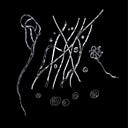Hayflick Limit

The finiteness of a normal cell cycle is determined by the Hayflick Limit, a phenomenon that supports and sustains the process of cellular senescence [1].
If this recurring process were to be diverted from regular course, a concept arises proposing initiatives to delay or halt the limit of replication indefinitely. Helping not only to expound upon the reasons as to why chronic diseases (e.g., cancer) manifest, why metabolism declines as age increases, why wounds decrease in intention or healing rate (if not compromised by congenital or pre-existing conditions).
Ipso facto, providing a clue to the significance of division between prokaryotic (non-nucleoid) and eukaryotic (nucleoid) organisms. The former is often responsible for being a vector of diseases to nucleoid organisms, which, if successfully translated through the immune system, are given the opportunity to replicate, whereas preceding interaction was restricted to singularity. In the same action, the infected host becomes the new vector.
Immunosuppressed persons are the most vulnerable targets to pathogenic (disease-causing) organisms. Once these malign bacteria, viruses and fungi infiltrate the body, or irritate on the surface (topically), immune cells may be too weak and/or outnumbered to effectively combat the intrusive cells. Furthermore, demonstrating failure in properly identifying abnormal entities and suspicious activity.
When pathogens infect cells, they are noted to impart their genetic material, a unique sequence exchanged between the lipid envelopes of each respective cell. Severe illness is not exclusive to those of the pathogenic variety. Whereas some elements derive from living organisms, others possess origin through non-living elements.
Mutagenic organisms are those that increase the chances of cancer. These cancerous elements are most commonly observed in radiation and chemical solutions such as household cleaning products and lead gasoline.
Any organism capable of mutating is mutagenic. Most, if not all, are carcinogenic, including cancerous elements. Here, mutation occurs as a result of metastasis, a process wherein cancer cells multiply not only within the primary region of infliction, but gradually spreading to other areas, especially if remaining untreated.
The Hayflick Limit averages a mean value of ~50 replicated cells before decomposition. Often, it may be observed that pathogens like bacteria and viruses, as differentiated by helminths [2], prefer to use tinier bodies as hosts, e.g., insects and other animals who are able to facilitate viral transmission.
Malarial infections, contracted by mosquitoes, are a common method of transmission from which the proboscis behaves as a syringe. Just as poison and venom are administered by ingestion and injection, respectively, zoonotic transmissions are not limited to a single mode of transit. Some insects, for example, may effectively transfer a virus via contact with the mouth, followed by subsequent ingestion.
Other insects may be less effective if ingested, yet potent when injecting. This would imply any degree of potency to be contingent upon percentage of blood transfusion, relative to how quickly the body processes foreign and potentially harmful substances.
A practice that, in summary, aligns well with the life cycle of cells being attenuated by the natural, incurable, ubiquitous disease of aging.
___________________
[1] Cellular senescence is the regression of cell activity and regeneration in the latter stages of aging.
[2] A worm-like, parasitic organism that can range from microscopic (immature) to macroscopic (mature) in size.
